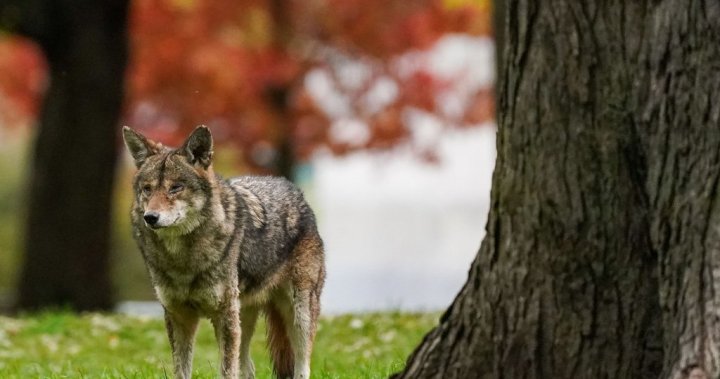Canada
Toronto communities urge action after rise in reported coyote attacks and sightings

Introduction: The Coyote Conundrum in Toronto’s Southwest
In recent months, the southwest Toronto neighborhoods of Liberty Village and Fort York have faced an unexpected challenge: a surge in coyote sightings and attacks. This situation has prompted residents to voice their concerns and demand action from local authorities. The Coyote Safety Coalition, representing the affected communities, has highlighted the urgency of the issue, particularly after a series of incidents where coyotes attacked pets, some requiring emergency veterinary care. This introduction sets the stage for understanding the growing concern among residents and the measures being taken to address it.
The Rising Concern: Coyote Sightings and Attacks
The number of coyote sightings and attacks in the Spadina-Fort York area has significantly increased since the start of the year. According to city records, there were 96 reported encounters between January 1 and February 13, with Liberty Village being a hotspot. These reports include 31 instances where residents felt threatened by coyotes exhibiting aggressive behavior. Notably, three dangerous incidents, including bites, occurred on February 10, underscoring the potential risk to public safety. This surge has led to heightened anxiety among residents, who are now calling for more robust measures to ensure their safety and that of their pets.
The City’s Response: Monitoring and Education
In response to the growing concerns, the City of Toronto has stepped up its efforts in Liberty Village. Increased monitoring of coyote activity and educational campaigns are being implemented to help residents coexist safely with these animals. Collaborations with wildlife experts from the Ministry of Natural Resources, Toronto Zoo, and Coyote Watch Canada have been established to inform the city’s strategy. While the city emphasizes supporting wildlife in their natural habitats, it acknowledges that public safety is paramount. If coyotes exhibit dangerous behavior, further actions, including trapping and euthanasia, are being considered as a last resort.
Residents’ Demands: Beyond Temporary Measures
Despite the city’s initiatives, residents remain unconvinced that current measures are sufficient. The Coyote Safety Coalition argues that patrols, while providing temporary security, do not offer a long-term solution. They are urging the city to develop a comprehensive and sustainable plan to address the issue permanently. This demand reflects a broader Desire for accountability and effective management of urban wildlife, ensuring the safety of both humans and animals in shared spaces.
Expert Insights: Balancing Wildlife and Urban Life
Wildlife experts consulted by the city suggest that coexisting with coyotes in urban areas requires a balanced approach. Educational programs can change human behavior, reducing conflicts. However, when coyotes pose a direct threat, humane management strategies may be necessary. This nuanced perspective highlights the complexity of managing urban wildlife, emphasizing the need for adaptable and multi-faceted solutions that prioritize both safety and compassion.
A Path Forward: Deputy Mayor’s Action Plan
Deputy Mayor Ausma Malik is set to present a plan addressing the coyote situation at the upcoming economic and community development meeting on February 26. Residents hope this plan will provide the comprehensive strategy they have been advocating for. By engaging with the community and collaborating with experts, the city has an opportunity to set a precedent for managing urban wildlife effectively. The success of this plan will depend on its inclusivity, innovation, and commitment to balancing the needs of all stakeholders—humans, pets, and wildlife alike.
Conclusion: A Shared Urban Environment
The coyote issue in Toronto’s southwest highlights the challenges of urban wildlife management. As natural habitats shrink, encounters between humans and wildlife are inevitable. The solution lies in fostering coexistence through education, effective management, and community engagement. By addressing this challenge collectively, Toronto can emerge as a model for urban wildlife cohabitation, ensuring safety for all while preserving the natural beauty of its environments.











